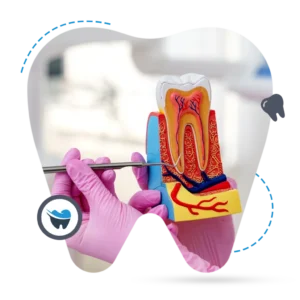Living with chronic pain can be physically exhausting and emotionally draining, especially when conventional treatments such as medication, physiotherapy, or even surgery fail to offer relief. In such cases, Spinal Cord Stimulation (SCS) has emerged as a promising, minimally invasive treatment that can provide substantial relief for many patients. At Neurology and Pain Management Clinic (NPMC) in Delhi, Dr. Gautam Arora (MBBS, MD, DM) offers spinal cord stimulation as a part of a comprehensive pain management approach.
Here’s a detailed look at what you can expect before, during, and after the procedure.
Understanding Spinal Cord Stimulation
Spinal cord stimulation involves implanting a device that sends mild electrical impulses to the spinal cord. These impulses block or modify the pain signals traveling to the brain, essentially replacing the sensation of pain with a more tolerable tingling or buzzing feeling (known as paresthesia).
SCS is particularly effective for individuals suffering from:
-
Failed Back Surgery Syndrome (FBSS)
-
Complex Regional Pain Syndrome (CRPS)
-
Chronic back and leg pain (sciatica)
-
Peripheral neuropathy
-
Post-surgical nerve pain
Before the Procedure: Evaluation and Trial
1. Consultation and Assessment
The first step begins with an in-depth consultation with Dr. Gautam Arora. Your medical history, current symptoms, previous treatments, and imaging results (such as MRI or CT scans) will be carefully reviewed. Dr. Arora will evaluate whether you’re a good candidate for SCS, taking into account both the physical and psychological aspects of chronic pain.
2. The Trial Phase
Before committing to permanent implantation, patients undergo a trial stimulation. This involves placing temporary electrodes in the epidural space of the spine under local anesthesia. The electrodes are connected to an external pulse generator that you’ll wear on your belt.
The trial usually lasts about 5 to 7 days. During this period, patients are encouraged to engage in normal daily activities to assess whether the stimulation provides meaningful pain relief (typically a 50% or greater reduction in pain).
If the trial is successful, you may proceed to the permanent implantation.
During the Procedure: Permanent Implantation
1. Preparing for Surgery
The permanent SCS implantation is typically done on an outpatient basis or with a short hospital stay. You’ll receive local anesthesia with sedation or, in some cases, general anesthesia.
2. Implantation Process
-
Leads Placement: The surgeon places thin, flexible electrodes into the epidural space using fluoroscopic (X-ray) guidance.
-
Generator Placement: A small pulse generator (similar in size to a pacemaker) is implanted under the skin, usually near the buttocks or lower abdomen.
-
Connection: The electrodes are connected to the generator via insulated wires.
The procedure usually takes 1 to 2 hours.
3. Post-Op Recovery
Patients are monitored for a few hours after surgery and can usually go home the same day. Instructions will be given regarding wound care, activity restrictions, and use of the stimulator.
After the Procedure: Living with Your Spinal Cord Stimulator
1. Programming the Device
A few days after implantation, you’ll return to the clinic for device programming. Using a handheld remote, Dr. Arora will fine-tune the stimulation settings to optimise pain relief. You’ll also be trained on how to use the remote to adjust the intensity or turn the device on and off as needed.
2. Pain Relief and Function Improvement
Many patients report significant pain relief shortly after activation. While complete elimination of pain may not be possible, most experience at least a 50–70% reduction in pain, along with improved sleep, increased activity levels, and reduced reliance on medications.
3. Follow-Up and Maintenance
Regular follow-ups are essential to monitor device performance and ensure long-term effectiveness. Battery life varies based on usage—non-rechargeable systems may last 2–5 years, while rechargeable ones can last up to 10 years.
Should any issues arise, such as lead migration or infection, Dr. Arora and the NPMC team are fully equipped to address them promptly.
Benefits of Spinal Cord Stimulation
-
Minimally invasive procedure
-
Adjustable and reversible treatment
-
Reduces or eliminates the need for opioids
-
Customizable to individual pain patterns
-
Enhances overall quality of life
Are There Risks?
Like any medical procedure, SCS carries some risks, though they are generally low. Potential complications include infection, bleeding, lead displacement, hardware malfunction, or insufficient pain relief. Dr. Arora will discuss all risks and precautions during your consultation to help you make an informed decision.
Conclusion: A Personalised Path to Pain Relief
Spinal cord stimulation is a game-changer for many patients who’ve exhausted other pain management options. With the expertise of Dr. Gautam Arora at the Neurology and Pain Management Clinic, Delhi, you can expect a thorough evaluation, compassionate care, and advanced treatment designed around your unique needs.
If chronic pain is holding you back from living fully, it might be time to explore the life-changing potential of spinal cord stimulation. Book a consultation at NPMC today and take your first step toward lasting relief. At NPMC, Dr. Gautam Arora combines clinical expertise with a compassionate approach to ensure every patient receives thoughtful, effective care. If you’re struggling with unexplained muscle weakness, chronic tingling, or nerve pain, book a consultation today—because relief is possible with the right help.





